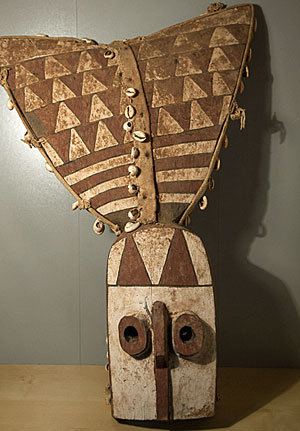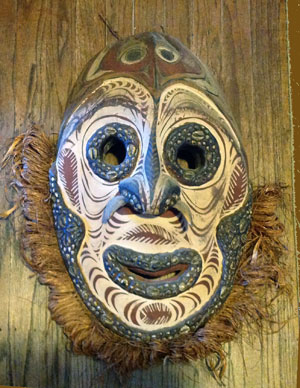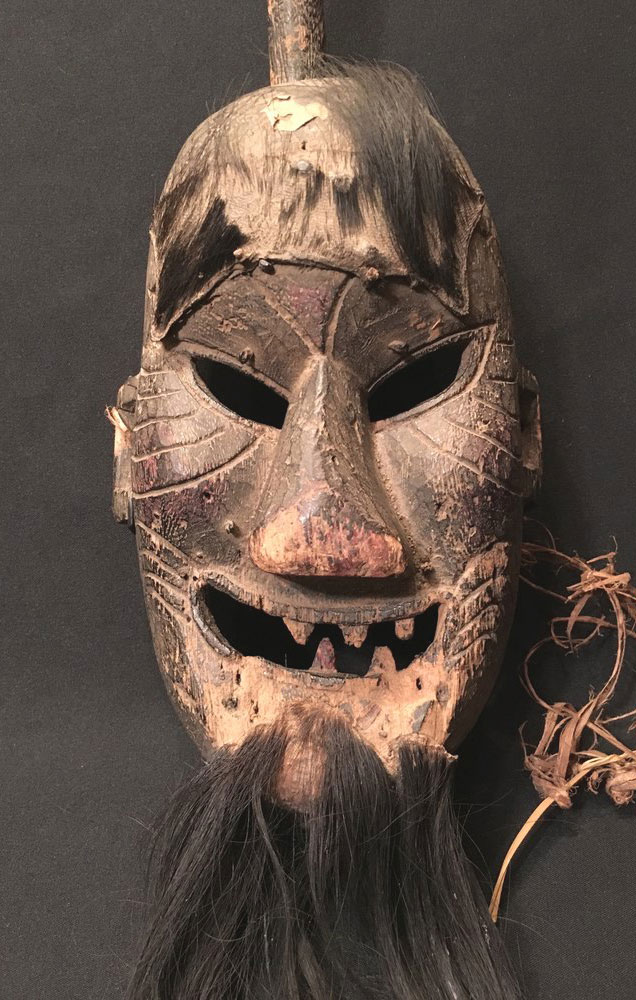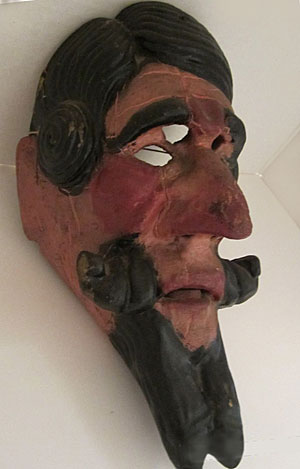 My book writing continues. There will be about 200 masks in the Mexican section so it was hard to pick just one for the blog. It is a skull, but not one for Day of the Dead.
My book writing continues. There will be about 200 masks in the Mexican section so it was hard to pick just one for the blog. It is a skull, but not one for Day of the Dead.
In Mexico, it is common during Semana Santa (Holy Week, the period from Palm Sunday through Easter Sunday) for there to be Easter pagents, depicting the capture and crucifixion of Christ. Those who pursue and torment Jesus are called by various names, depending on the town or region. In the state of San Luis Potosí these negative legions are called Judios (Juduses) or Fariseos (Pharisees). They demonstrate ignorant, unruly and evil behavior, led by their mentor, Judus. The masks are varied and inventive, and include skulls, monsters, Kings and Queens, soldiers, Bishops, animals, fallen women or caricatures of ordinary people. This is a classic skull mask from San Luis Potosí. The mask is 10 inches high and carved from very heavy wood. It appears to have been danced.






4 Comments
Aaron
“Judio” means Jew, not Judas. Judas is the same word in Spanish and English. The vilification of Jews unfortunately follows a pattern in masquerades in Catholic countries, from Lithuania to Latin America. That said, there are plenty of rituals specifically directed at Judas, who is frequently represented to appear as the devil himself. The ceremonial burning of (a usually paper maché) representation of Judas is common at Easter time in both Catholic and Orthodox countries.
Bryan Stevens
Aaron underscores an interesting pattern. When clergy from Roman Catholic countries attempted to convert the Indians of the New World, they provided names for the deities and names for the alleged enemies. What I learned, when I was writing about how this played out in masked dances, in the Sierra de Puebla of Mexico, was that the Indians there accepted the Spanish names, but not to use them as the Spanish intended. Instead they reapplied these names to native gods that they wished to secretly maintain, or they used them to secretly mock their Spanish oppressors. They did not accept the literal meanings supplied by the Spanish, although they pretended to do so. For example, they were allowed to talk disparagingly about the Jews, Pontius Pilate, the Roman Centurions,etc. when really they were disparaging the Spanish. I haven’t studied San Luis Potosí Judios but I’ll bet that they too serve some covert purpose that is not meant to be antisemitic (see Mexican Masks and Puppets: Master Carvers of the Sierra de Puebla, 2012, Schiffer Publishing)
Emilie
Hey I was wondering when this mask was made and what it is made out of?
Bob Ibold
Sorry for the delay. That big skull mask would be late 20th century and is carved out of a hardwood that is quite heavy.